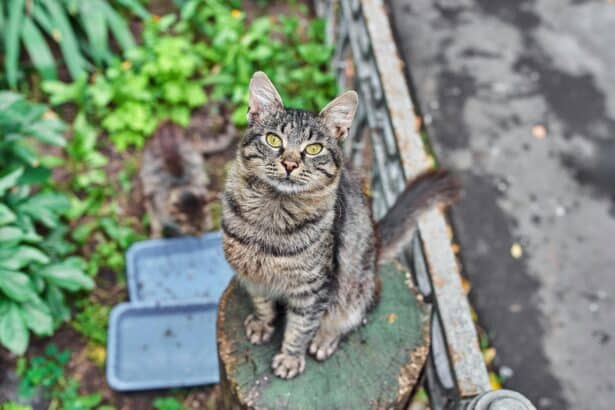Cats have that tiny superpower: with one slow blink and a twitch of whiskers, they can turn a long day into a soft one. They slip into our routines, our couches and, let’s be honest, our camera rolls. Ready to understand your feline a little better—so you can love her even more?
The quiet magic of living with a cat
Independent, yes—but never truly far. Your cat syncs with your rituals: sunbeam naps, evening feather chases, and spontaneous head bumps when you least expect them.
She learns the house rules quickly when the setup makes sense for her: a calm litter area, fresh water available, and stable landmarks. Consistency does wonders.
Practical tip: build a five-minute “treasure trail.” Scatter a few safe cardboard pieces or paper balls along a hallway with tiny treats hidden underneath. Nose, paws, brain—everyone works, and boredom takes a break. Curious about the world through her eyes? Explore how cats see.
Where do cats come from?
Domestic cats cozied up to humans in the Near East around 10,000 years ago, lured by rodents nesting near grain stores. We offered safety and food; they offered pest control and companionship.
From granary guard to living-room confidante, the partnership grew as cats followed trade routes into our homes. Cohabitation turned into a lasting bond.
Surprising fact: whiskers (vibrissae) pick up subtle air currents and help a cat judge distance and space. Never trim them—they’re her on-board navigation system. Want to deep-dive into breeds after this? Browse our friendly cat breeds guide.

Popular cat breeds at a glance
Long hair, short hair, curls or no fur at all; ears upright, folded or oversized—there’s a personality for every home. Persian, Siamese, Maine Coon, Sphynx, Scottish Fold, Bengal, British Shorthair… and so many more.
Looks matter less than lifestyle fit. Consider energy level, kid-friendliness, grooming, and space needs. The right match means a peaceful, happy life together.
Thinking of a shortcut to your heart cat? Take a tour of the best-loved breeds and their traits to refine your choice with confidence.
Crafting the perfect home territory
Indoor cats thrive when their territory is rich: perches, scratching posts, hiding spots, and hunt-style play. Think vertical: shelves, a sturdy cat tree, even a window hammock.
Controlled outdoor time in a harness, a secured balcony, or a fenced garden boosts happiness without risking safety. Keep ID and vaccinations up to date.
Common mistake to avoid: placing the litter box next to food or a noisy appliance. Cats link cleanliness with quiet; stress there often leads to avoidance. Need help with furniture claws? Try these proven ideas to prevent scratching on sofas.
Litter, done right
Choose a spacious box, quiet location, and a substrate your cat actually likes. Scoop daily; a deep clean weekly keeps the peace.
Changing brands? Transition slowly by mixing old and new over a week. Sudden swaps can trigger bathroom protests—understandable, right?
Want a hand picking the perfect setup? Here’s your step-by-step guide to choosing the best litter for your home and kitty.
Health basics you shouldn’t skip
Routine vet checks, spay/neuter, core vaccinations, and parasite prevention form the foundation. Keep an eye on teeth, weight, hydration, and appetite.
Red flags include sudden appetite loss, hiding, fast breathing, skipping the litter box, or a dull coat. Early consults save worries—and often money.
Learn the signs with our guide to common cat illnesses, and plan regular protection using this practical deworming guide.
Feeding and hydration, simply done
Obligate carnivores need quality animal protein. Wet food supports hydration—especially for shy drinkers—while balanced dry can complement the menu.
Offer multiple water stations away from food and litter; cats drink more when the water feels “special.” Fountains can help, too.
Make confident choices with our feature on what cats really should eat. Fun tidbit: cats hardly sense sweetness, so sugary camouflage won’t fool them. Curious about fish? See the benefits of fish when it’s wisely chosen.
Behaviors that fascinate
Tail quivers, teeth chattering at birds, kitten-style kneading on your blanket—your cat “talks” with her whole body. Watch closely; patterns appear.
Purring isn’t only “I’m happy.” It can soothe, request, or self-comfort. Context is your best clue to decode the message.
Want to sharpen your feline listening? Discover why cats purr and learn to read tail signals with our handy tail-language guide.
In short
Cats flourish when we respect their rhythm, their space, and their sensitivity. A few thoughtful tweaks—and a lot of gentleness—weave a strong bond.
And when she chooses you with her eyes? That’s your cue: you’re already hers.
FAQ
How do I make my home truly cat-friendly?
Offer vertical spaces, daily play that mimics hunting, and quiet litter areas. Rotate toys weekly to keep novelty and curiosity alive.
Which litter should I pick for my cat?
Test clumping, mineral, or plant-based to match her preference. The essentials: big box, calm spot, daily scooping, and gradual changes.
How many meals per day suit most adult cats?
Two to three small meals work well. For grazers, use portioned free-feeding or a dispenser to spread intake without overfeeding.
When should I see the vet?
Any sudden behavior change or symptoms lasting 24–48 hours deserve a visit. Aim for annual check-ups—twice yearly for seniors.








